Read our walking guide of the Alpujarras here
So we spent March hiking in the Alpujarras, walking between tiny white villages hidden in the Spanish Sierra Nevada mountains. And man alive, we loved those white villages of the Alpujarras.
Las Alpujarras, if you don’t know, is a tiny nook in the giant crevasses of the Sierra Nevada range in Andalusia, not too far from Granada. And in this small mountain region sit over fifty ancient villages. They’re perched on the cliff edges or nestled in the deep valleys, all sitting chalky white against the green landscape.
And they are some of the most dramatic villages we’ve ever visited:
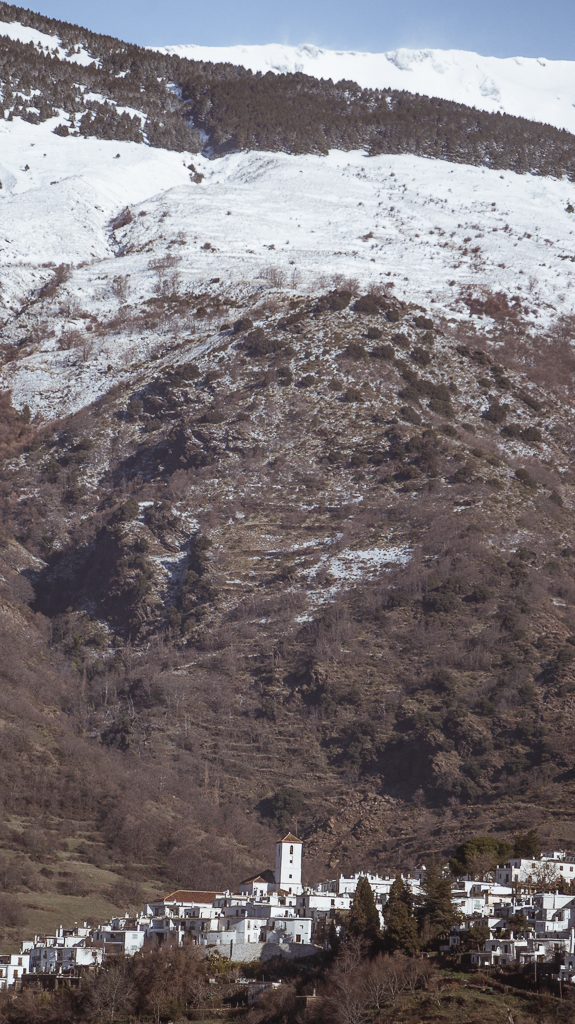
A little history…
These mysterious white villages of the Alpujarras are around five hundred years old. And here’s the interesting bit: they were one of the last places the Arabic Moors held before they were driven out of Spain in the sixteenth century. That means that the white villages have preserved architecture that wouldn’t look out of place in Morocco; flat-rooved white cottages higgledy-piggledy together, connected with narrow covered alleyways made of plaster and wood called tinaos.
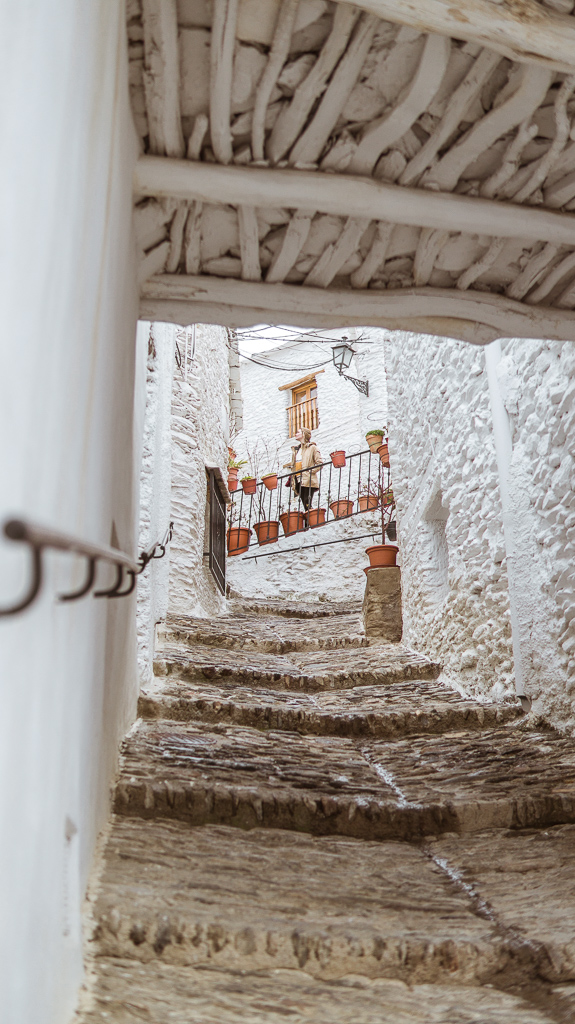
They’re adorable to look at and they’re fascinating too, each with their own atmosphere and culture. You want rugs? Ham? Honey? Each village specialises in something. We spent a couple of weeks getting to know six of the best-known villages, hopping between them on the GR-7 walking trail (reminder: you can read about how to do that here). And we loved the Alpujarra vibe, everyone slowing to the glacial pace of the mountain.
So to inspire you to visit, here is our guide to each of those little white villages of the Alpujarras:
What are the white villages of the Alpujarras?
Cáñar
Elevation: 1014m
The first village we came across on the GR7 had a quiet, untouristy air with huge views over the Orgiva valley and town below.
Cáñar felt noticeably higher too after leaving Lanjarón, and a distinctly more Arabic style of architecture.
Look out for the potted plants strung up on the white walls and snow melt run-offs cleft into the cobbled streets too. Both are a common feature of Alpujarran streets that we were obsessed with.
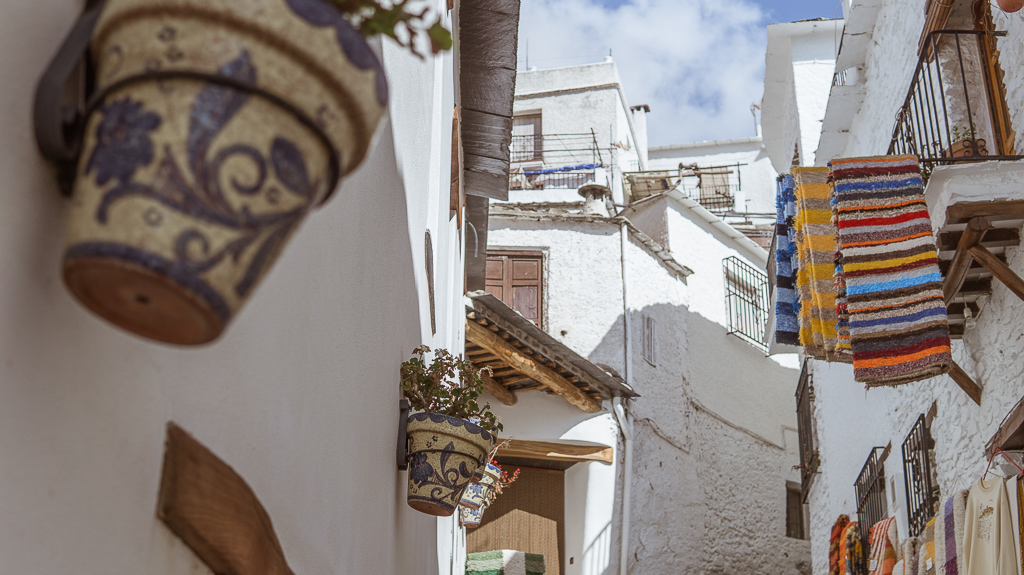
Soportújar
Elevation: 940m
Not too far away from Cáñar another white village is visible: Soportújar with its steep (steep!) and narrow streets, and café bars full of locals.
We arrived to find that it had mysteriously bedecked itself with witch’s heads and figurines (yes, the flying on-a-broom type). We just couldn’t work it out. Then we heard that this is something to do with an old legend of a nearby cave, a cave which local children would disappear into, never to return, and the rumoured witch that lived there.
It’s a jolly little place right?
Seriously it has such atmosphere and is surprisingly big to wander around too.
Pampaneira
Elevation: 1060m
The lowest village of three in the Poqueira Valley, a picturesque gorge that leads up to the highest peak in mainland Spain. We stayed in Pampaneira a couple of times, and we think it’s the most beautiful of the three; it’s got a pretty square centred around the church of Santa Cruz, little bars with log burners, and lots of old shops selling local rugs.
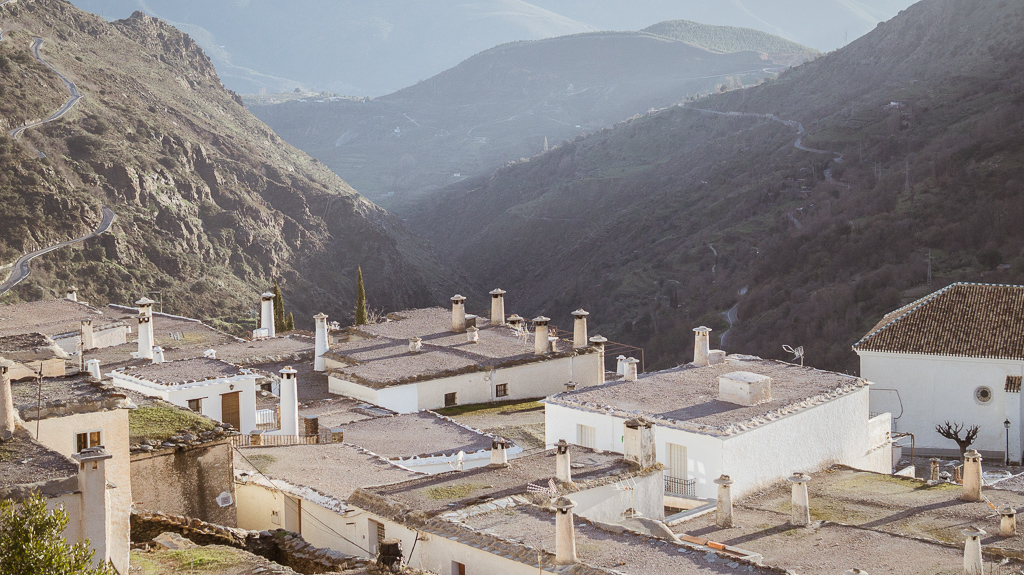
Not to go on about fabric but the traditional stuff is everywhere, draped over every doorway or window. We particularly loved the bed linen in our rural hostal – locally woven, it felt vintage but also cool enough to put in our own home with its beautiful geometric patterns.
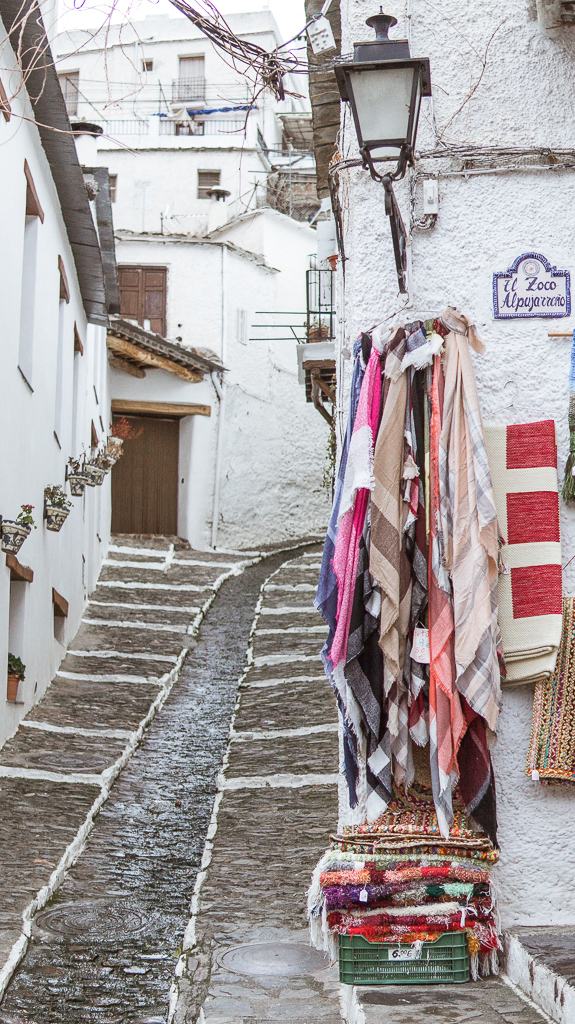
There’s also the sweetest chocolate shop which sells locally made bars of all kinds of flavours. Yeah, Alpujarra chocolate is actually a thing!
Pampaneira is potentially the busiest village we’ve listed here. It even got the odd tourist coach which surprised us – but don’t worry about that, evenings and mornings were quiet.
Bubión
Elevation: 1350m
Middle of the three and very pretty, with a food shop (unlike Pampaneira oddly) and a cosy café culture that we sheltered in when the weather got cold. El Quinto Pino was a café-cum-bar we liked specifically, where we whiled away a couple of hours, ordering churros and Spanish hot chocolate and sitting in the window.
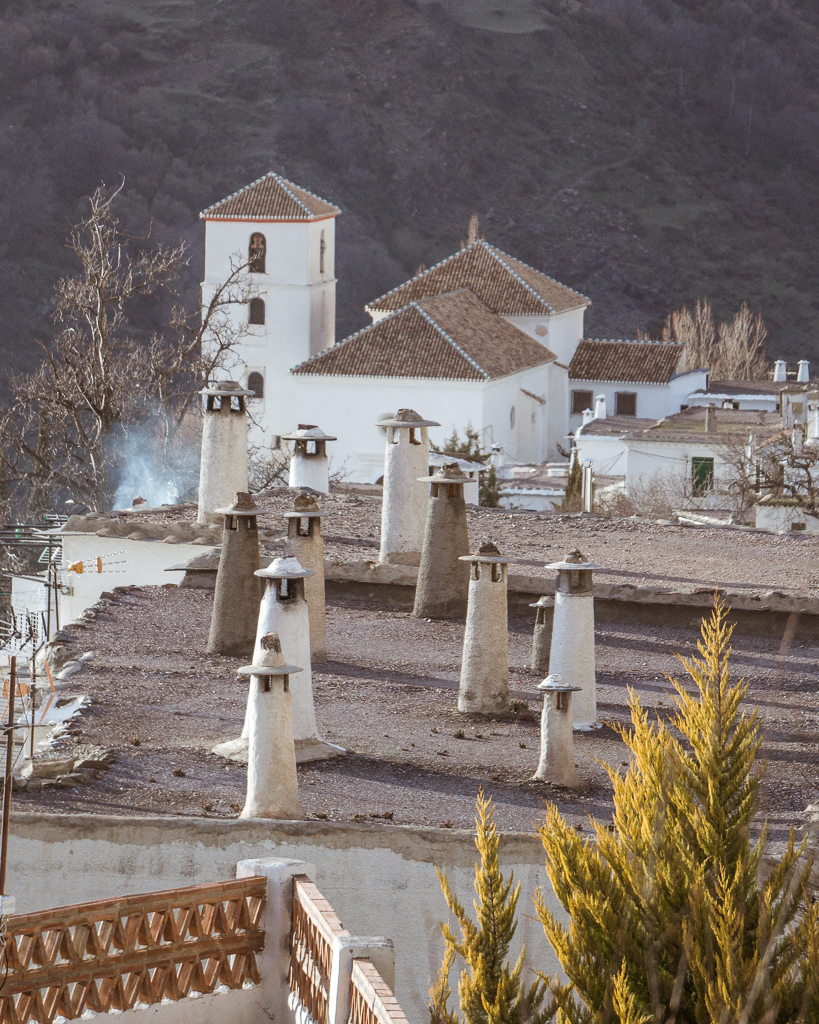
It’s also where we met a local man who told us all about the nearby Buddhist monastery and how the ‘real’ Dalai Lama had visited…
We’re not sure about that last part but a) we can confirm there is indeed a Buddhist monastery about 5km away; and b) locals are friendly in the villages of the Alpujarras. It was here we first ran into the friendliest local of them all: a Black Labrador sporting a jaunty red neckerchief. We saw him in each of the Poqueira Valley villages without fail.
Capileira
Elevation: 1436m
The highest of the three, and the place we had to stop when a misty snow storm settled over the Alpujarra.
Luckily for us, Capileira has some of the most dramatic and picturesque walkways of all the villages which were perfect for photos and wandering in the eerie mountain mist.
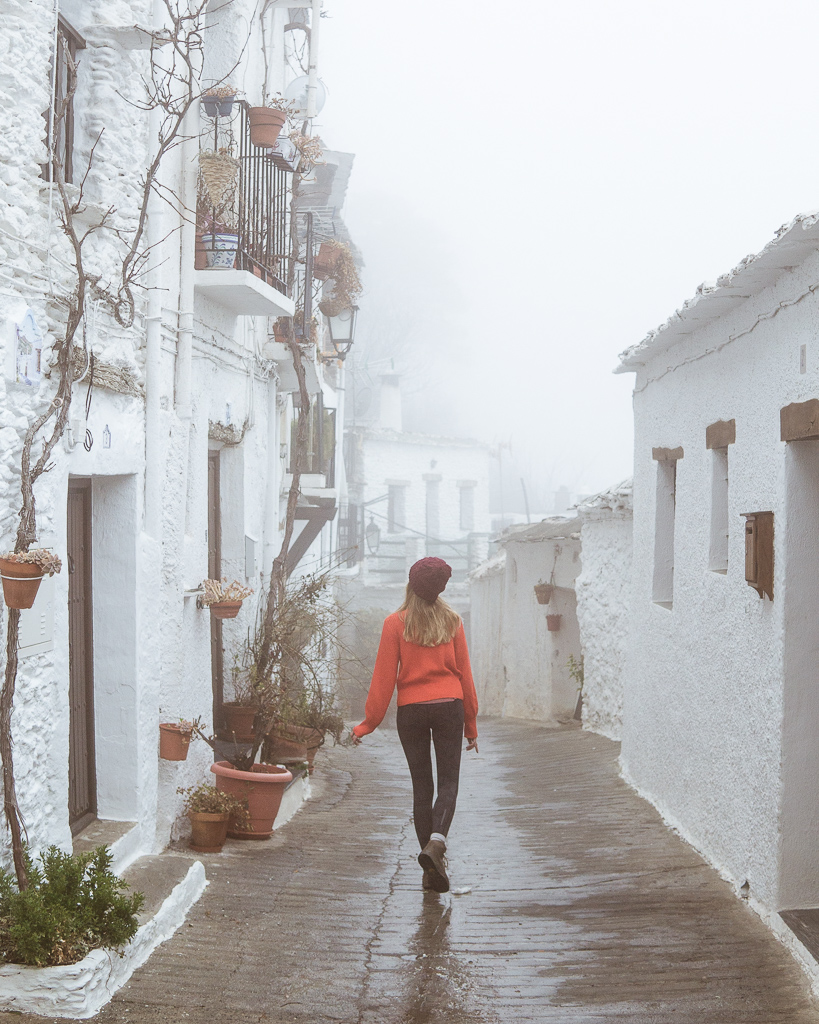
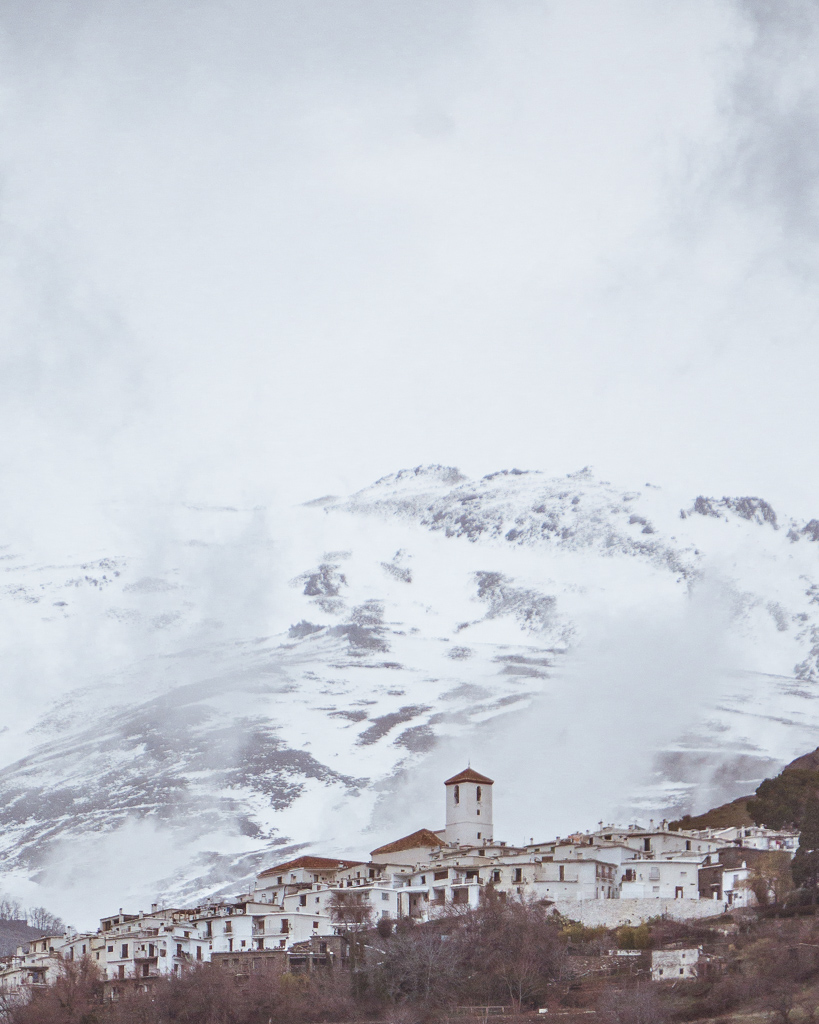
Capileira itself is really the gateway to the high mountain walking. From the village you can see the snowy peak of Mulhacén beyond. We didn’t have the equipment to hike further up but did carry on walking to where the buildings peter out and the real mountain landscapes begin. It’s where we had our (only) sighting of Spanish ibex, the sturdy mountain goats that wander wild around these parts.
Pitres
Elevation: 874m
On into the next valley, Pitres gave us a completely different feel, lower on the mountain plains. Even in early Spring, this area was dry and had that golden, almost Mediterranean look so different from the other villages.
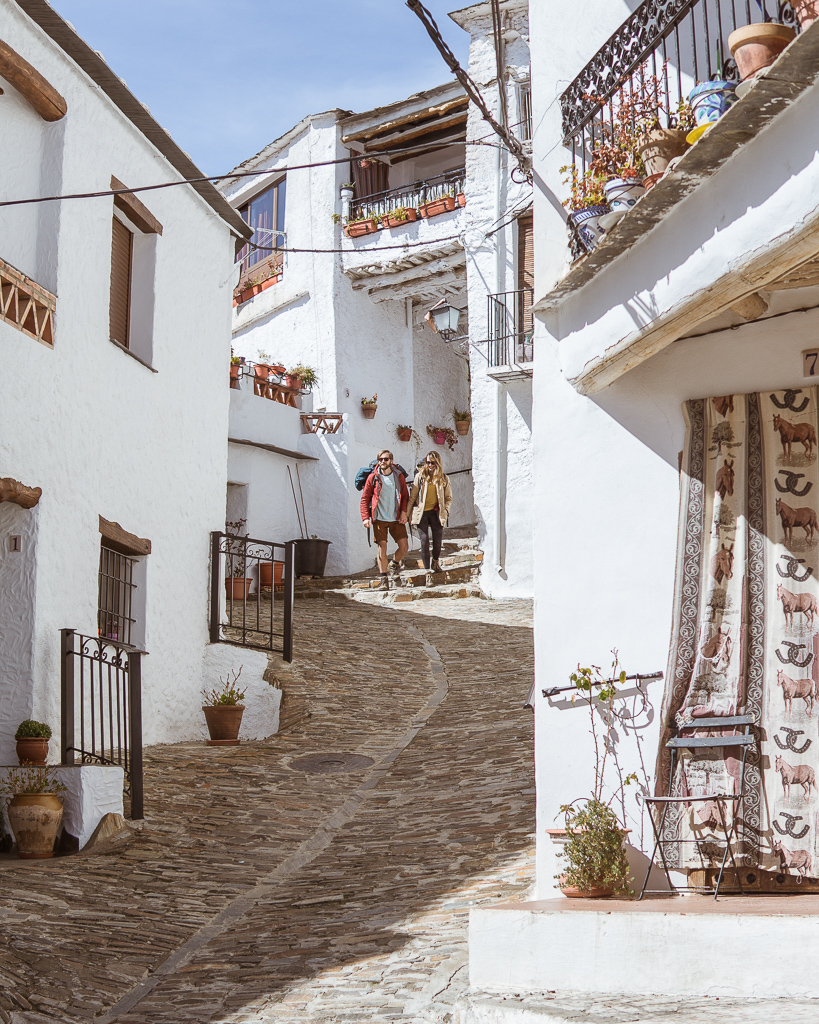
We took this opportunity to do a couple of circular walks around and about, heading out to a tiny hamlet below Pitres called Fondales. It was beautiful and completely deserted, but for a woman quietly reading under her bougainvillea.
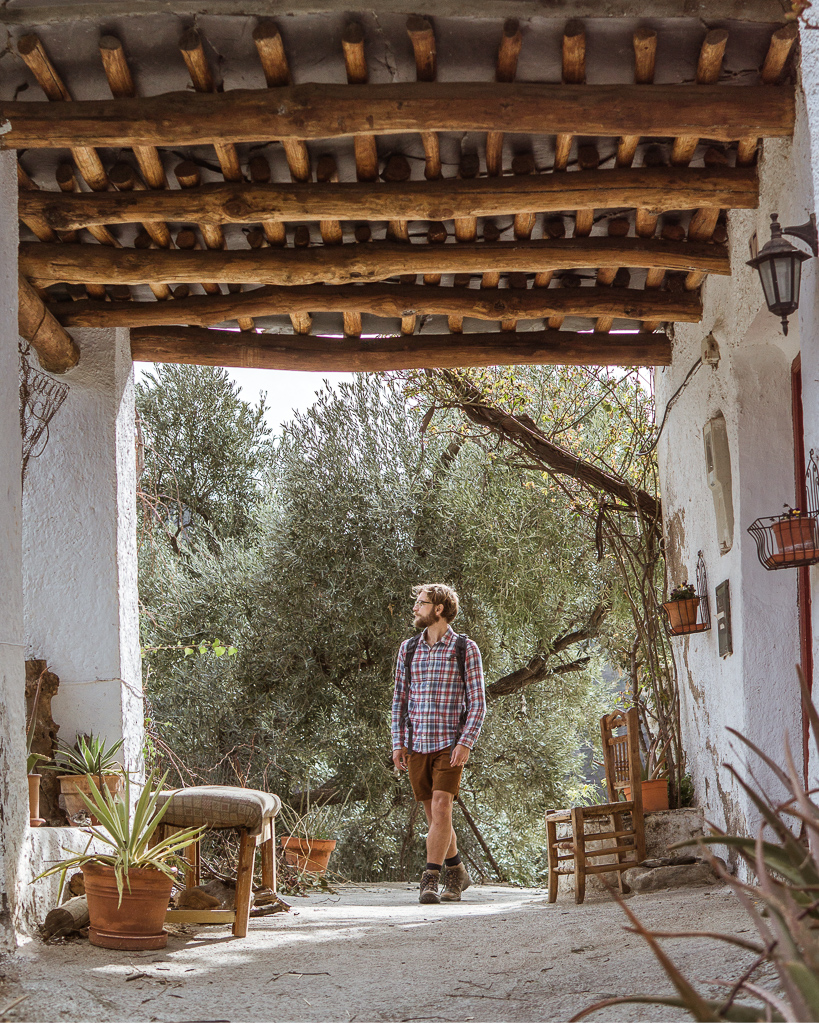
In Pitres there’s a shop and a bank and all that kind of stuff which is handy. We also managed to camp here pitching our tent in the only campsite around, still out-of-season in March. Did have its own restaurant open though that served us a traditional delicious Andalusia stuffed aubergine for dinner. (And a single apple for dessert – on a plate with a napkin and knife, so we guess it counts).
Trevélez
Elevation: 1476m
This is the furthest up into the mountains of the Sierra Nevada, and as far as we went. In fact it turned out to be the highest village in all of mainland Spain!
If you really like ham you’ll really like this village. This village is internationally known for curing great legs of the stuff, meat strung up on shop front and doorframes. Have to say we have no strong preference for ham but appreciated the history and skill none the less.
It’s actually slightly larger than most of the other villages too, so a good one to visit if time is short!
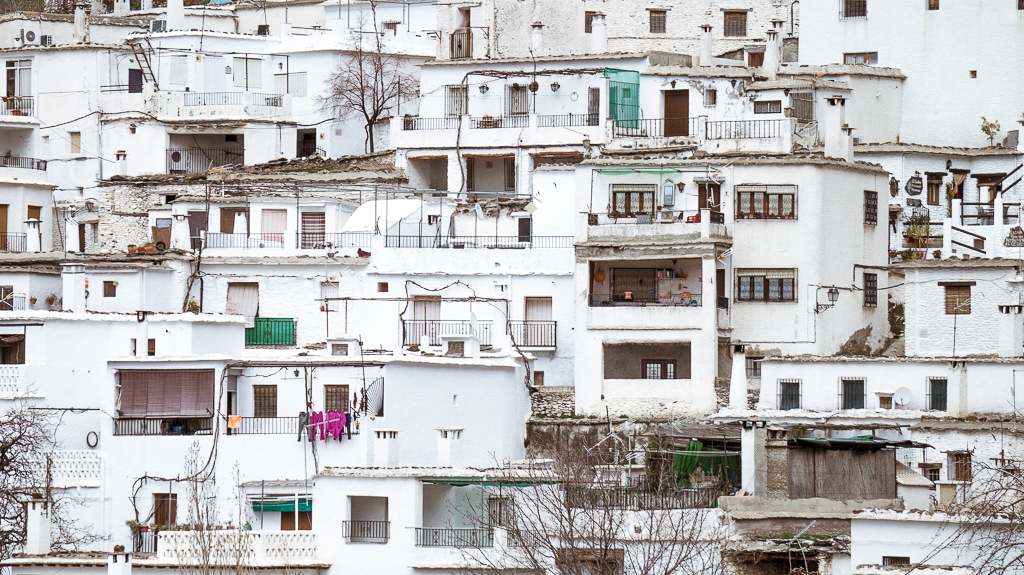
So here are our six white villages of the Alpujarras, each eccentric and endearing in its own way.
What sounds like your favourite white village? Let us know in the comments 😊
Pin it:
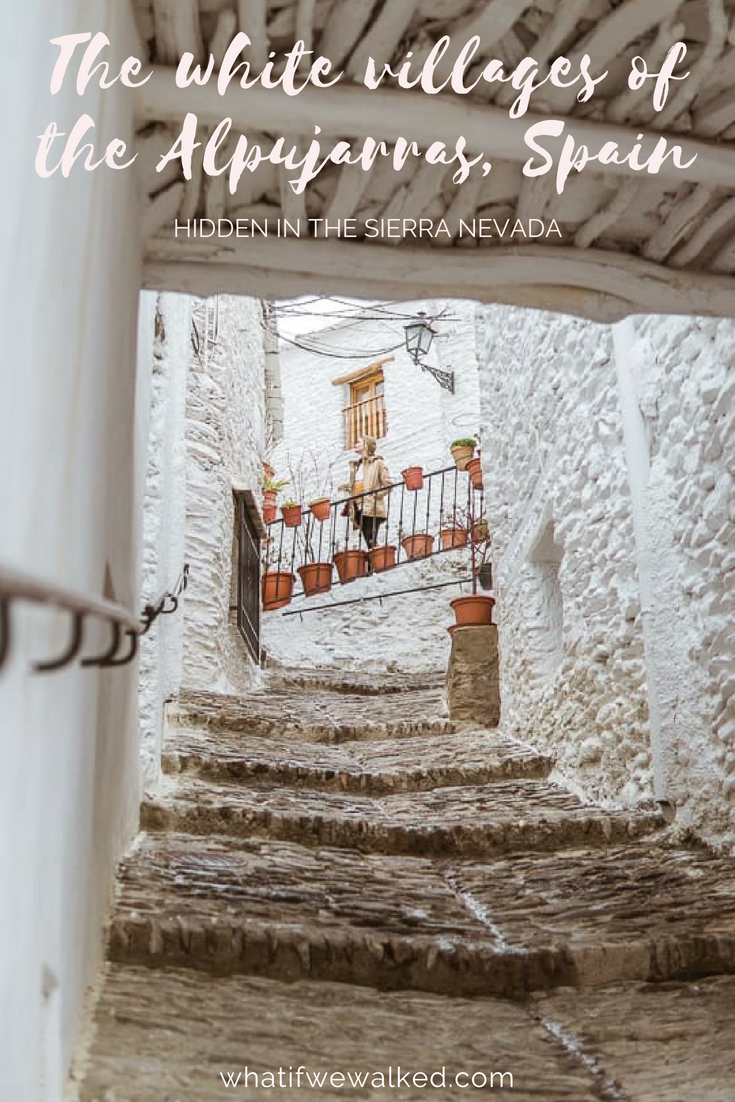

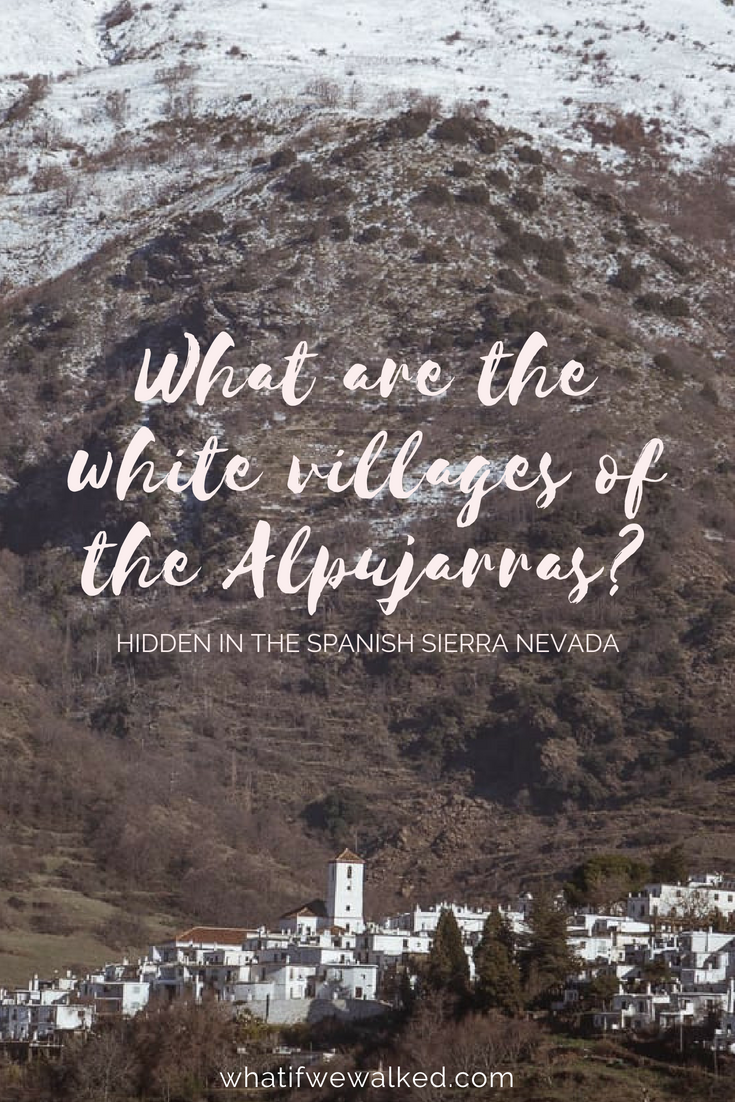
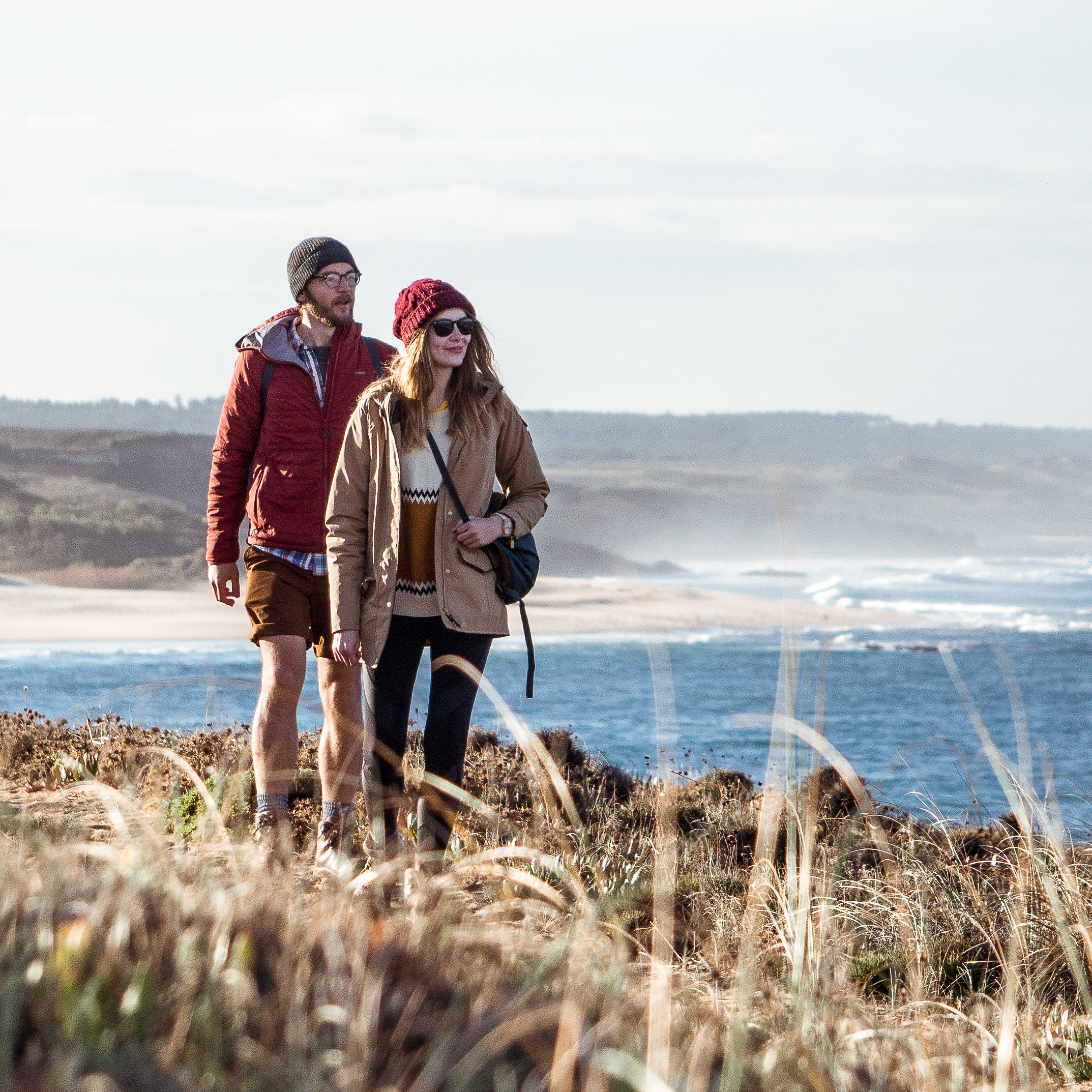
It’s going to be end of mine day, however before
end I am reading this enormous post to improve my know-how.
This was a great article that you wrote! I recently spend a week in Bubion and cannot wait to return. Very special villages indeed. Highly recommend to other travelers! Gorgeous, safe, interesting, friendly people, and in the fall, fruit and veggies everywhere on the vine!
It’s an absolutely fantastic area, that we often recommend. We loved combining it with Granada. A brilliant city!